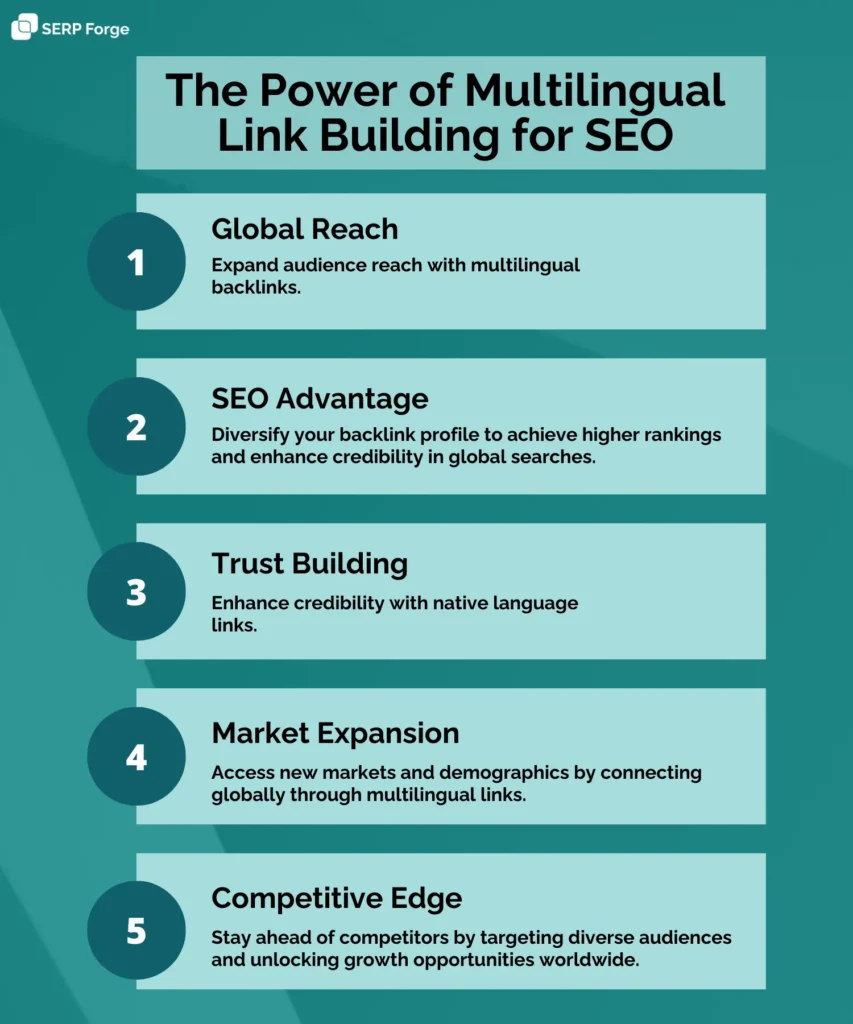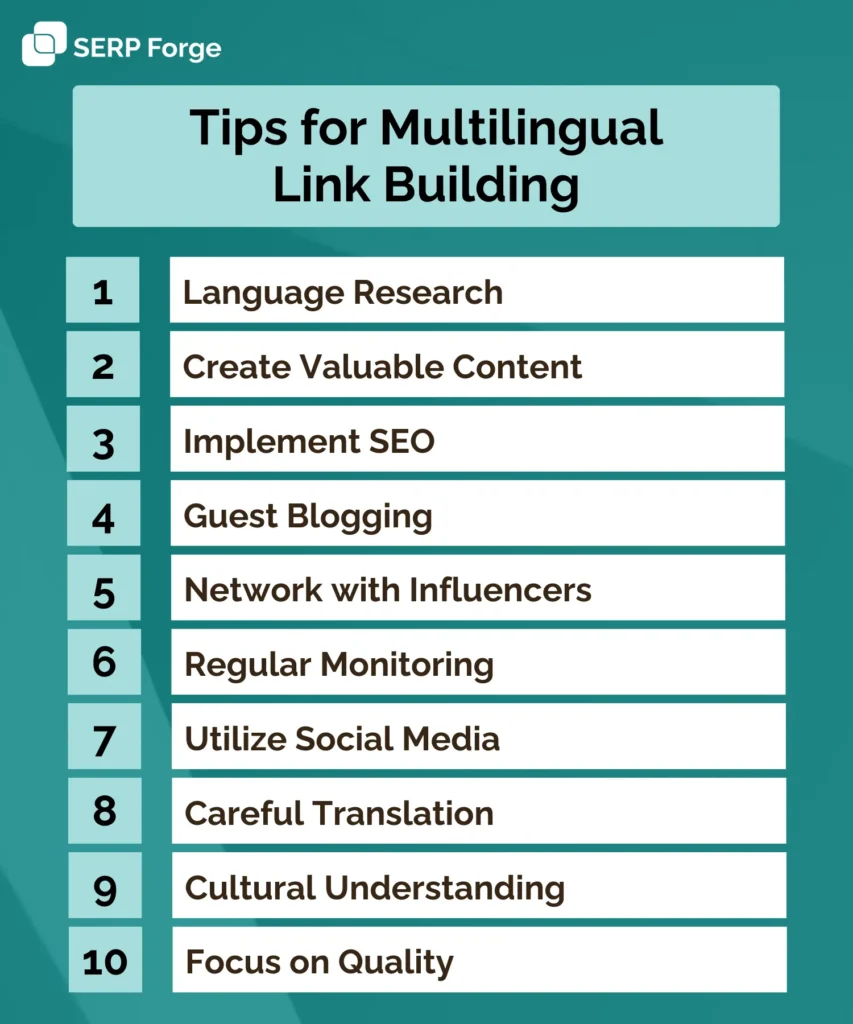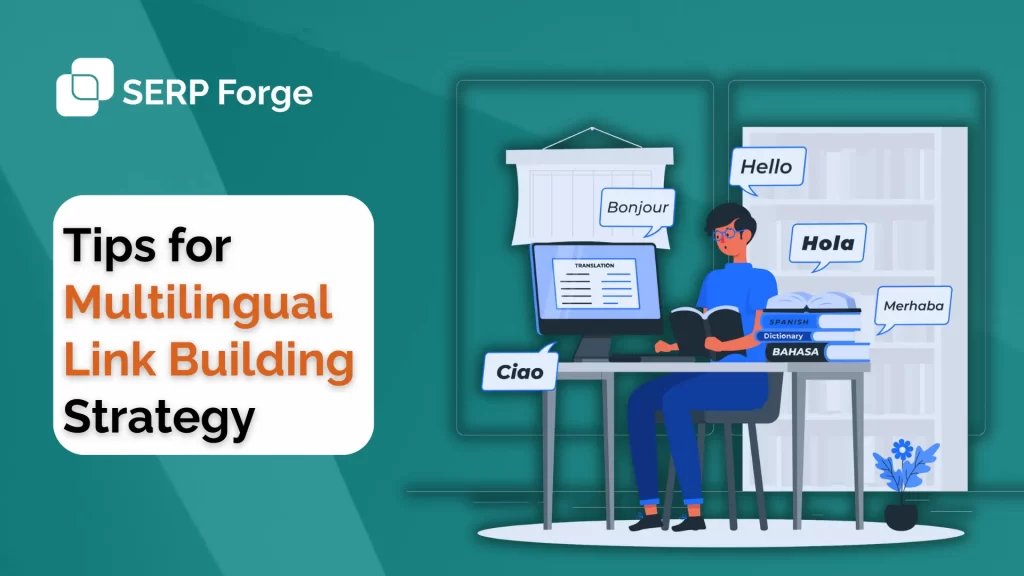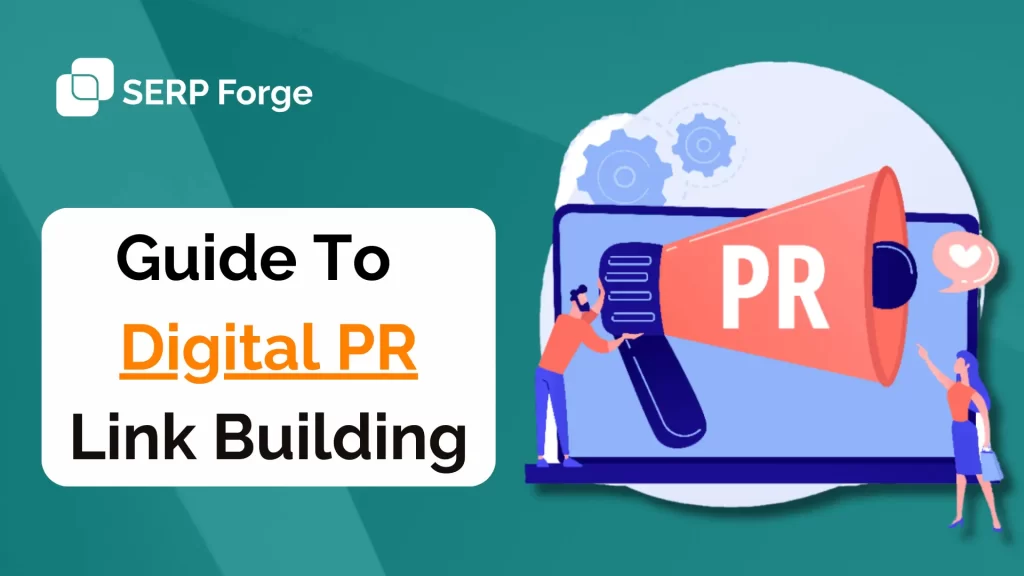Imagine this scenario: You have an amazing business website, with top-quality content that can solve your potential customers’ needs. That’s fantastic!
However, there is one problem: currently, your website is only available in English.
What does this mean? It means that visitors who prefer browsing in their native language will be unable to benefit from all the valuable information you offer. That’s bad.
So, what can you do? Well, here’s where multilingual link building comes into play.
You can use multilingual link building to write text and put it in their region.
Let’s take a look at it and learn about it.
What is multilingual link building for SEO
Multilingual link building is all about creating links to websites in different languages.
How can it help you?
Well, with this, you can easily climb search rankings in other countries.
So let’s say that you have a website in English and you want to prioritize it for Spanish search results.
With the help of a multilingual network, you can get links from other Spanish websites that will show Google that your website is also relevant in Spanish and increase your ranking in Spanish search results.
This way you can appeal to a range of Spanish audiences and build your presence.
The importance of using a multilingual link building for SEO and backlinks
Now let’s talk about why you should build multilingual links.
We mean, what’s the point of this strategy if you’re already winning your SEO game, right? Well, let us share some reasons why you should use multilingual link building.

1. It increases the global visibility of your website
You will find that creating backlinks from multilingual websites helps your website reach the world.
Your website appears in global search results and brings new visitors from different countries to your site.
Getting links from websites in different languages makes it easier for people who speak that foreign language to find you.
In short, if you want to improve your global presence and attract international customers, building a multilingual network is one of the best ways to do so.
2. Improves your international SEO ranking
You know what? Search engines love different things.
So when search engines are crawling your website and if they find that you are getting links from different region websites, it will strongly consider it as a signal of credibility and relevance.
How can it help you?
Once your website is considered to be a trustworthy website, then the only trip it will take is to the top pages of the global search results.
3. It increases the trustworthiness and reliability of your website
You will find that by building links in multiple languages, you will not only reach more people but also show that your website is a trusted international source.
Links to their native language websites tell them you are a trusted source.
It’s like telling that visitor, “Hey, look, your native language website links to me and I’m a legit source.”
4. It helps you expand your market
If you dream of running your business internationally, developing a multilingual network is your secret weapon.
When you create links to websites in different markets and languages, you’re telling the world, “Hey, we’re here and we speak your language!”
The links you find from other websites are your passport to these new territories.
5. It helps you stay ahead of your competition
Imagine this: While your competitors are still trying to focus on your domestic audience, you’re reaching out to a multicultural audience by building multilingual links.
That’s what you get with multilingual link building.
Having multilingual links will open up new opportunities and markets that will benefit you in many ways.
This way you can stay ahead of your competition.
12 tips on multilingual link-building and how to get backlinks
OK, so now you know what multilingual link building is and why you should use it. What’s next for you? Well, now, it’s time for some tips on how to do it.
Here are tips to get you started.

1. Do language research
Which language and region do you want to target?
That’s what you must know before you start your multilingual campaign.
Make a list and select the language and region you want to target.
Start keyword research.
Remember that using your general content keyword research won’t work for your regional research.
Just try researching specific keywords that can help find links in your target area.
2. Create high quality multilingual content
Once you’ve decided on your target language and created a list of keywords for that region, it’s time to create your content.
The most important thing here is that the content must be valuable to the target audience.
Some examples of content could include blog posts, video clips, product descriptions and more.
3. Do SEO
Once you create your content, you need to do SEO.
See, just creating and uploading the target language content won’t work. For this, you need to inform Google that this content is specifically tailored to an X region audience.
You can do this with the help of the hreflang tag.
What is hreflang tag?
Hreflang tags are HTML tags that indicate the language and geography your website is targeting.
You can use hreflang tags to specify the target language and country in each page.

4. Write guest posts
Another fantastic way to build multilingual links is guest blogging.
You can create a list of websites you want to pitch and offer to write guest posts in return for links.
This way you can get backlinks from target language websites and attract visitors from that website.
Learn how you can fast track the process for outreach using blogger outreach services.
5. Use local directories and forums
You can use local directories and forums to get local backlinks and build an audience.
Just find the best local directories and submit your website’s products or services to those directories.
Then, build a forum community by actively answering questions and providing valuable insights.
All of this can lead to natural backlinks.
Learn about tiered link building to build strong links in a faster way.
6. Network with them
If you want to expand your website to a new area, it is very important to contact and interact with popular websites, influencers and bloggers in that area.
You can contact them, offer something of value like free guest posts or free infographics, and ask for backlinks to relevant pages.
7. Check and make adjustments
Creating content to get a backlink isn’t enough. For your international links to work, you need to monitor your performance on a regular basis.
The best way to do this is to use tools like Google Analytics and Search Console to track how your rankings and traffic are improving in each area.
You can then adjust your plan based on the results.
8. Use social media
Now, it’s also wise to consider social media as part of your strategy.
Start connecting with your target audience by creating profiles on popular social media platforms in your target area.
You can also share your multilingual content and encourage social sharing, which can indirectly generate external links.
9. Stay updated at all times
The Internet is constantly evolving and bringing new changes everywhere. That’s why you should always try to stay up to date.
Watch for changes in search engine algorithms that can affect your SEO rankings and also find out what works best for SEO in each language market
10. Translating carefully
When it comes to translating text into the target language, some people try to translate their original English content as it is.
This may not always work.
You see, keyword intent can vary from region to region. In such cases, a literal translation of the English text is unwise.
Additionally, cultural differences can also be a big factor.
Therefore, you should always try to understand the target audience and interpret the content in a way that they like.
Just remember never to use machine translation.
11. Understand their culture
As mentioned above, culture can vary from country to country.
This is why it is also important to learn about the culture of your target country before creating any content for them.
12. Quality rather than quantity
When it comes to building multilingual links, the quality of backlinks works far better than the number of your backlinks.
Always try to get high quality backlinks from high authority websites related to your niche.
Conclusion
So this was a guide to building multilingual networks.
Now it’s your turn to go ahead and follow this path to expand your business globally.
Here is a quick list of highlights:
1. Research the country and language you want to target
2. Understand their culture
3. Create high quality multilingual content
4. Optimize for SEO
5. Outreach
FAQs
-
How does multilingual link-building differ from traditional link-building?
Traditional link-building focuses on acquiring links from websites that operate in the same language or target market.
Multilingual link-building focuses on obtaining links from websites in different languages and regions.
-
Should I use machine translation for a multilingual link building campaign?
Although machine translation may seem like a convenient option for translating your content, it is not advisable when it comes to building multilingual links.






